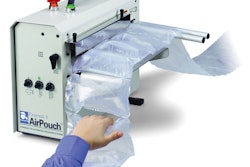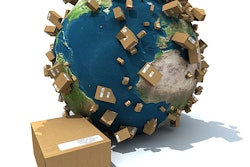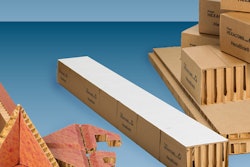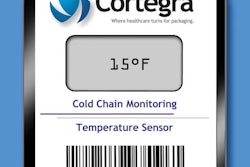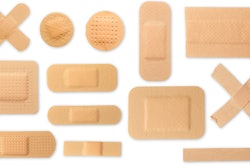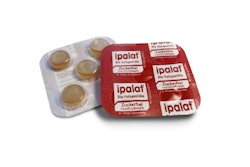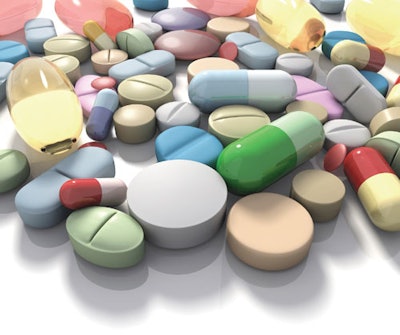
Healthcare Packaging (HCP): Tell our readers about your law firm and your role in anti-counterfeiting from a packaging perspective.
Lawrence Friedman (LF): I am primarily a customs lawyer but I have a background in intellectual property law. The counterfeiting issue straddles that. It's partly trademarks and copyrights, and customs law, so it's something that I keep an eye on and try to assist some companies our firm deals with. We are active in counseling pharmaceutical companies on customs, trade-related matters, and U.S. Food and Drug Administration compliance, mostly related to the importation of pharmaceuticals and medical devices.
HCP: Does any of that touch upon packaging?
LF: Yes, with the counterfeiting aspect of packaging. We deal with appropriate labeling and consumer protection-type regulations as well. U.S. Customs recently issued its year-end 2008 statistics on counterfeiting seizures. For the [pharmaceutical] industry, the statistics are not good. For instance, Customs seized $272 million in merchandise last year, in what they consider the Health and Safety area, which includes pharmaceuticals. Of that, $28.1 million was in counterfeit pharmaceuticals. That total number was up from $196 million [in 2007]. So, pharmaceuticals ranked number three among counterfeited merchandise seized in the U.S.
HCP: Where are these seizures typically made?
LF: Primarily at seaports and airports. Of all merchandise seized, the largest source [of the counterfeited product coming into the U.S.] is China. China, India, and Hong Kong are the top three sources of seized pharmaceuticals. Customs' 2008 Intellectual Property Report says pharmaceuticals were a top safety concern, accounting for 45 percent of everything they call the Safety and Security category. [To see the report, visit www.cbp.gov.]
HCP: Is the U.S. stepping up efforts to address this problem?
LF: Intellectual Property and Health and Safety represent two areas that Customs calls priority focus industries. They consider them a priority and are looking for assistance from the trade in terms of information that will help them to further enforce these intellectual property rights at the borders.
HCP: How are these counterfeits discovered?
LF: Customs does it on a random and unusual basis for intellectual property based on what's called the Customs targeting system. So Customs has an invoice description of the merchandise, the country from which it's shipped, and the name of the manufacturer. If there is anything that doesn't hold together in a way that makes sense—for instance, if the invoice description is toothpaste, and it comes from a factory that has never exported toothpaste before, or from a shipping company that has never exported toothpaste before—there is a chance that Customs will be more likely to open that up and take a look, especially if last week that company was exporting shoes and this week it's toothpaste. Customs has access to the ship and aircraft's manifest prior to the time that it arrives. They know both the co-signee—the receiving party in the U.S.—and the shipper and manufacturer of the merchandise. So those things have to make some sense.
But the thing that is more likely to get Customs to focus on an incoming container is when a U.S. company, take Pfizer for example, knows that there is counterfeit Viagra floating around in the market. That company will work with Customs to prevent the counterfeit merchandise from entering the country. So a potential counterfeit lead often comes from a compliant raised by a U.S. company. Big companies either have their own staff to investigate, or they outsource the investigation. What happens is that a company like Pfizer discovers counterfeit Viagra in pharmacies. Then the question is where did the pharmacy buy it?
The investigative side is an agency outside of Customs called Immigration and Customs Enforcement, or ICE. So the way to get a Customs inspector to actually crack open a container and inspect it is to have ICE work an investigation with the actual owner of the trademark or patent or with the legitimate licensee. Good investigators in the country of production can trace the merchandise back to the point of production. There are people who specialize in that kind of investigation. With that information, it may be possible to bring an enforcement action against the producer in the producer's home country.
Step one: Record your trademark with U.S. Customs
HCP: What steps can a pharmaceutical manufacturer take to battle counterfeit drugs?
LF: There are legal and physical technological steps. First and foremost, the best money a company will ever spend on lawyers is to record their trademarks with the U.S. Customs and Border Protection. Customs won't be on the lookout for your products or your trademark unless it is in their system. There is a process where you file your documents with Customs, and you pay them [about $200] to get into their system. At that point, anyone who imports the merchandise would have to show that they have authorization to do so.
Step two: Educate the enforcers
HCP: Once that's done, what would you recommend a company do?
LF: Then it's a matter of educating the folks at Customs for things to look for in order to distinguish between legitimate and counterfeit merchandise. Nobody knows your product better than you. An average Customs Inspector is going to see a container full of pills. They are not going to know a legitimate pill from a counterfeit. But the industry folks know how much should be encapsulated, and they know what to look for in terms of the binding materials and what the packaging materials should look like.
There are about 160 ports in all, including air, land, and sea. The big seaports are along the East coast, such as in Charleston, SC, and New York, as well as in Houston, Los Angeles, Long Beach, and Seattle-Tacoma. In Washington there is a centralized office of Intellectual Property Rights where you can work with Customs, and they can push the information down to the ports.
HCP: Once a pharmaceutical manufacturer learns where counterfeit merchandise is coming from what should it do?
LF: Then it's usually not that difficult to identify the lead ports. In other words, if it's coming from China, Taiwan, or another eastern Asian country, it's likely to be coming in by a ship through Los Angeles or Long Beach. But if it's coming from India, it could also arrive at Charleston or New York.
HCP: It sounds like it is an overwhelming task for a company to determine which of about 160 ports to consider, right?
LF: You strategically pick four or five ports that are most likely to be sources for your competing counterfeits.
Step three: Whenever possible, prosecute
HCP: What action should a company take against a counterfeiter?
LF: Make sure that when you can, you prosecute the offender(s). If they are in the U.S., you can try to convince the local U.S. Attorney's offices to prosecute those people or companies. Frankly, they have got their hands full with terrorists and drug dealers, so it's not a high priority for them. But it's a very high priority for Customs, particularly when health and safety is involved.
HCP: There exist many technologies that work with packaging in the anti-counterfeiting battle. What is your take on them?
LF: The big thing in pharmaceuticals is the increasing use of RFID tagging. In terms of the packaging itself, things like color-shifting inks, holography, and 2D bar coding can all be employed in anti-counterfeiting efforts. There are companies that have been able to support Customs in the purchase of bar-code readers and things like that so that they can scan merchandise to confirm whether it's legit. And the FDA has recently issued industry guidance on identification materials that can be mixed into pills to distinguish counterfeits.
HCP: Tell us more about how often containers are inspected and what occurs?
LF: Only about 3 percent of containers that enter the U.S. are actually opened. But if a container is targeted because the value is wrong, or the description indicates that it's something other than what it purports to be then yes, Customs will open it. You are not going to get Customs to open every container; although Congress thinks they can. There is a law that says that by 2012, Customs is supposed to scan every container, at least by X-ray. Frankly, the trade thinks that's going to be impossible.
HCP: Determining a suspect shipment seems to be based entirely on the accuracy of the land, air, or sea shipment manifest. Isn't it dangerous to assume that all value and description information on the manifest report is accurate?
LF: Well, it's not that the manifest is going to say “counterfeit Viagra.” What's going to happen is the intelligence that you have gathered through your investigation is going to indicate that this particular counterfeiter has been indentifying his merchandise as, say, children's toys made in Taiwan. And the last time they shipped children's toys from Taiwan, we traced it to pharmacies in California. The bottom line is you are unlikely to get the first shipment and you are unlikely to get every shipment. But the idea is to make it as expensive as possible for these people to do this and push them out. It's always a cat-and-mouse game. Counterfeiters are going to change their invoice descriptions and change the ports they use. They are going to shift from sea to air. And when they can't sneak counterfeit Viagra into the U.S., they are going to try to sneak in counterfeit vitamins. They look for the soft spots—areas where people aren't likely to be on the lookout.
HCP: One of the challenges for legitimate manufacturers that's existed for years is that they can just barely stay ahead of the counterfeiters because the counterfeiters can buy virtually the same packaging materials and machinery as the legitimate manufacturers do. How does a supplier/maker of RFID chips or bar codes, or packaging machinery or materials determine if they are selling to a legitimate manufacturer or to a counterfeiter? After all, their goal is to sell as much of their equipment or bar-code labels, for example, as possible. Is there a way for them to get involved and avoid selling to would-be counterfeiters?
LF: That's an interesting question that I hadn't really thought about. You're asking to what extent the packaging suppliers are conducting any due diligence on their customers? As far as they are concerned, there is a certain degree of, 'Well, look, this customer is packaging a product, and we want them to do it well, with our machine, materials, or technology.' If their customer is in the U.S., which the counterfeiters generally are not, and the packaging supplier has reason to know that the packaging equipment it was selling was going to be used by counterfeiters, that packaging firm runs the risk of being charged as an aider and abettor, and in the U.S. they could conceivably be sued or charged with regard to counterfeiting.
HCP: You're saying that it's unlikely that counterfeit products or packaging are originating in the U.S., is that correct?
LF: Most of the counterfeit stuff is coming in from companies outside the U.S. From an equipment perspective, it's possible that if a counterfeiting operation were shut down in India or China the legal authorities would learn what equipment was used in the packaging process. But the problem is that most counterfeiters won't buy directly from the big companies. Instead, they would likely buy their equipment second-hand through a distributor. In that instance it would be difficult to tie any knowledge back to the producers of the packaging equipment.
HCP: Couldn't knowledgeable packaging and Customs people look closely at the packaging materials found in a seized counterfeit shipment and try to track the materials, machinery, or technology used by the counterfeiter(s)?
LF: Yes, it's absolutely possible. Big companies have either employees or agents on the ground in the countries where these things are coming from. After there has been a seizure of merchandise or some sort of legal action, it's not uncommon for people to get a look at what's get going on inside the factory, and they would know who is making these things.
Lawrence M. Friedman is a partner with Barnes, Richardson & Colburn, which has specialized in global trade law since 1919. Friedman's practice includes intellectual property; merchandise valuation; and country of origin marking, audits and penalty proceedings. Contact him at 312/297-9554 or visit www.barnes
richardson.com.
Lawrence Friedman (LF): I am primarily a customs lawyer but I have a background in intellectual property law. The counterfeiting issue straddles that. It's partly trademarks and copyrights, and customs law, so it's something that I keep an eye on and try to assist some companies our firm deals with. We are active in counseling pharmaceutical companies on customs, trade-related matters, and U.S. Food and Drug Administration compliance, mostly related to the importation of pharmaceuticals and medical devices.
HCP: Does any of that touch upon packaging?
LF: Yes, with the counterfeiting aspect of packaging. We deal with appropriate labeling and consumer protection-type regulations as well. U.S. Customs recently issued its year-end 2008 statistics on counterfeiting seizures. For the [pharmaceutical] industry, the statistics are not good. For instance, Customs seized $272 million in merchandise last year, in what they consider the Health and Safety area, which includes pharmaceuticals. Of that, $28.1 million was in counterfeit pharmaceuticals. That total number was up from $196 million [in 2007]. So, pharmaceuticals ranked number three among counterfeited merchandise seized in the U.S.
HCP: Where are these seizures typically made?
LF: Primarily at seaports and airports. Of all merchandise seized, the largest source [of the counterfeited product coming into the U.S.] is China. China, India, and Hong Kong are the top three sources of seized pharmaceuticals. Customs' 2008 Intellectual Property Report says pharmaceuticals were a top safety concern, accounting for 45 percent of everything they call the Safety and Security category. [To see the report, visit www.cbp.gov.]
HCP: Is the U.S. stepping up efforts to address this problem?
LF: Intellectual Property and Health and Safety represent two areas that Customs calls priority focus industries. They consider them a priority and are looking for assistance from the trade in terms of information that will help them to further enforce these intellectual property rights at the borders.
HCP: How are these counterfeits discovered?
LF: Customs does it on a random and unusual basis for intellectual property based on what's called the Customs targeting system. So Customs has an invoice description of the merchandise, the country from which it's shipped, and the name of the manufacturer. If there is anything that doesn't hold together in a way that makes sense—for instance, if the invoice description is toothpaste, and it comes from a factory that has never exported toothpaste before, or from a shipping company that has never exported toothpaste before—there is a chance that Customs will be more likely to open that up and take a look, especially if last week that company was exporting shoes and this week it's toothpaste. Customs has access to the ship and aircraft's manifest prior to the time that it arrives. They know both the co-signee—the receiving party in the U.S.—and the shipper and manufacturer of the merchandise. So those things have to make some sense.
But the thing that is more likely to get Customs to focus on an incoming container is when a U.S. company, take Pfizer for example, knows that there is counterfeit Viagra floating around in the market. That company will work with Customs to prevent the counterfeit merchandise from entering the country. So a potential counterfeit lead often comes from a compliant raised by a U.S. company. Big companies either have their own staff to investigate, or they outsource the investigation. What happens is that a company like Pfizer discovers counterfeit Viagra in pharmacies. Then the question is where did the pharmacy buy it?
The investigative side is an agency outside of Customs called Immigration and Customs Enforcement, or ICE. So the way to get a Customs inspector to actually crack open a container and inspect it is to have ICE work an investigation with the actual owner of the trademark or patent or with the legitimate licensee. Good investigators in the country of production can trace the merchandise back to the point of production. There are people who specialize in that kind of investigation. With that information, it may be possible to bring an enforcement action against the producer in the producer's home country.
Step one: Record your trademark with U.S. Customs
HCP: What steps can a pharmaceutical manufacturer take to battle counterfeit drugs?
LF: There are legal and physical technological steps. First and foremost, the best money a company will ever spend on lawyers is to record their trademarks with the U.S. Customs and Border Protection. Customs won't be on the lookout for your products or your trademark unless it is in their system. There is a process where you file your documents with Customs, and you pay them [about $200] to get into their system. At that point, anyone who imports the merchandise would have to show that they have authorization to do so.
Step two: Educate the enforcers
HCP: Once that's done, what would you recommend a company do?
LF: Then it's a matter of educating the folks at Customs for things to look for in order to distinguish between legitimate and counterfeit merchandise. Nobody knows your product better than you. An average Customs Inspector is going to see a container full of pills. They are not going to know a legitimate pill from a counterfeit. But the industry folks know how much should be encapsulated, and they know what to look for in terms of the binding materials and what the packaging materials should look like.
There are about 160 ports in all, including air, land, and sea. The big seaports are along the East coast, such as in Charleston, SC, and New York, as well as in Houston, Los Angeles, Long Beach, and Seattle-Tacoma. In Washington there is a centralized office of Intellectual Property Rights where you can work with Customs, and they can push the information down to the ports.
HCP: Once a pharmaceutical manufacturer learns where counterfeit merchandise is coming from what should it do?
LF: Then it's usually not that difficult to identify the lead ports. In other words, if it's coming from China, Taiwan, or another eastern Asian country, it's likely to be coming in by a ship through Los Angeles or Long Beach. But if it's coming from India, it could also arrive at Charleston or New York.
HCP: It sounds like it is an overwhelming task for a company to determine which of about 160 ports to consider, right?
LF: You strategically pick four or five ports that are most likely to be sources for your competing counterfeits.
Step three: Whenever possible, prosecute
HCP: What action should a company take against a counterfeiter?
LF: Make sure that when you can, you prosecute the offender(s). If they are in the U.S., you can try to convince the local U.S. Attorney's offices to prosecute those people or companies. Frankly, they have got their hands full with terrorists and drug dealers, so it's not a high priority for them. But it's a very high priority for Customs, particularly when health and safety is involved.
HCP: There exist many technologies that work with packaging in the anti-counterfeiting battle. What is your take on them?
LF: The big thing in pharmaceuticals is the increasing use of RFID tagging. In terms of the packaging itself, things like color-shifting inks, holography, and 2D bar coding can all be employed in anti-counterfeiting efforts. There are companies that have been able to support Customs in the purchase of bar-code readers and things like that so that they can scan merchandise to confirm whether it's legit. And the FDA has recently issued industry guidance on identification materials that can be mixed into pills to distinguish counterfeits.
HCP: Tell us more about how often containers are inspected and what occurs?
LF: Only about 3 percent of containers that enter the U.S. are actually opened. But if a container is targeted because the value is wrong, or the description indicates that it's something other than what it purports to be then yes, Customs will open it. You are not going to get Customs to open every container; although Congress thinks they can. There is a law that says that by 2012, Customs is supposed to scan every container, at least by X-ray. Frankly, the trade thinks that's going to be impossible.
HCP: Determining a suspect shipment seems to be based entirely on the accuracy of the land, air, or sea shipment manifest. Isn't it dangerous to assume that all value and description information on the manifest report is accurate?
LF: Well, it's not that the manifest is going to say “counterfeit Viagra.” What's going to happen is the intelligence that you have gathered through your investigation is going to indicate that this particular counterfeiter has been indentifying his merchandise as, say, children's toys made in Taiwan. And the last time they shipped children's toys from Taiwan, we traced it to pharmacies in California. The bottom line is you are unlikely to get the first shipment and you are unlikely to get every shipment. But the idea is to make it as expensive as possible for these people to do this and push them out. It's always a cat-and-mouse game. Counterfeiters are going to change their invoice descriptions and change the ports they use. They are going to shift from sea to air. And when they can't sneak counterfeit Viagra into the U.S., they are going to try to sneak in counterfeit vitamins. They look for the soft spots—areas where people aren't likely to be on the lookout.
HCP: One of the challenges for legitimate manufacturers that's existed for years is that they can just barely stay ahead of the counterfeiters because the counterfeiters can buy virtually the same packaging materials and machinery as the legitimate manufacturers do. How does a supplier/maker of RFID chips or bar codes, or packaging machinery or materials determine if they are selling to a legitimate manufacturer or to a counterfeiter? After all, their goal is to sell as much of their equipment or bar-code labels, for example, as possible. Is there a way for them to get involved and avoid selling to would-be counterfeiters?
LF: That's an interesting question that I hadn't really thought about. You're asking to what extent the packaging suppliers are conducting any due diligence on their customers? As far as they are concerned, there is a certain degree of, 'Well, look, this customer is packaging a product, and we want them to do it well, with our machine, materials, or technology.' If their customer is in the U.S., which the counterfeiters generally are not, and the packaging supplier has reason to know that the packaging equipment it was selling was going to be used by counterfeiters, that packaging firm runs the risk of being charged as an aider and abettor, and in the U.S. they could conceivably be sued or charged with regard to counterfeiting.
HCP: You're saying that it's unlikely that counterfeit products or packaging are originating in the U.S., is that correct?
LF: Most of the counterfeit stuff is coming in from companies outside the U.S. From an equipment perspective, it's possible that if a counterfeiting operation were shut down in India or China the legal authorities would learn what equipment was used in the packaging process. But the problem is that most counterfeiters won't buy directly from the big companies. Instead, they would likely buy their equipment second-hand through a distributor. In that instance it would be difficult to tie any knowledge back to the producers of the packaging equipment.
HCP: Couldn't knowledgeable packaging and Customs people look closely at the packaging materials found in a seized counterfeit shipment and try to track the materials, machinery, or technology used by the counterfeiter(s)?
LF: Yes, it's absolutely possible. Big companies have either employees or agents on the ground in the countries where these things are coming from. After there has been a seizure of merchandise or some sort of legal action, it's not uncommon for people to get a look at what's get going on inside the factory, and they would know who is making these things.
Lawrence M. Friedman is a partner with Barnes, Richardson & Colburn, which has specialized in global trade law since 1919. Friedman's practice includes intellectual property; merchandise valuation; and country of origin marking, audits and penalty proceedings. Contact him at 312/297-9554 or visit www.barnes
richardson.com.
